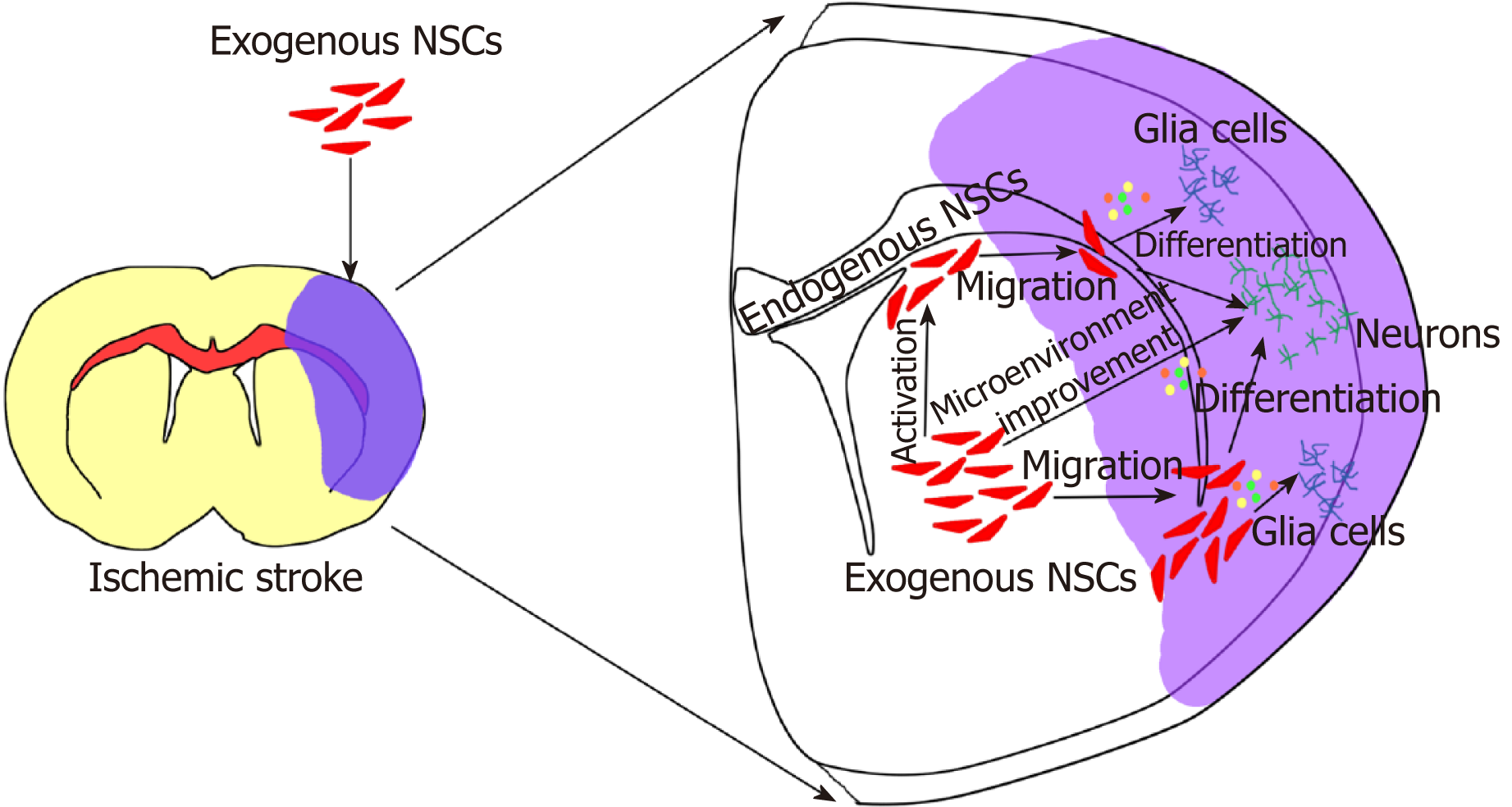Copyright
©The Author(s) 2019.
World J Stem Cells. Oct 26, 2019; 11(10): 817-830
Published online Oct 26, 2019. doi: 10.4252/wjsc.v11.i10.817
Published online Oct 26, 2019. doi: 10.4252/wjsc.v11.i10.817
Figure 2 Transplanted exogenous neural stem cells therapy for brain ischemic stroke.
After exogenous NSCs were transplanted into the ischemic brain, they can induce the endogenous NSCs activation of SVZ region. Then both exogenous and endogenous NSCs migrated to the cortical site of ischemic injury, differentiated to glia cells and neurons which contributed to glial scar formation and nerve tissue repair. Furthermore, it had two main mechanisms for reconstructing ischemic neural tissue in vivo: exogenous and activated endogenous stem cells directly compensated the lost nerve tissue by differentiating into nerve cells, transplanted NSCs improved the harmful inflammatory microenvironment around the ischemic regions via the bystander effect. NSCs: Neural stem cells; SVZ: Subventricular zone.
- Citation: Zhang GL, Zhu ZH, Wang YZ. Neural stem cell transplantation therapy for brain ischemic stroke: Review and perspectives. World J Stem Cells 2019; 11(10): 817-830
- URL: https://www.wjgnet.com/1948-0210/full/v11/i10/817.htm
- DOI: https://dx.doi.org/10.4252/wjsc.v11.i10.817









